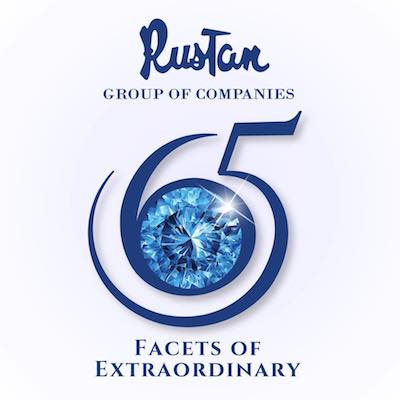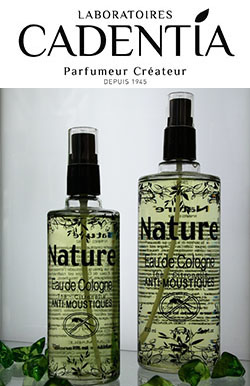Ambasciata d’Italia
MANILA
1947-2012
65 years of Italian- Philippine Diplomatic Relations
From an official point of view, regular relations, at a diplomatic level, were established after Italy became a nation. From a research work, done also with the precious help of the National Archives in Rome and Manila, work that has, however, room for improvement, it is possible to affirm that even before the constitution of the kingdom of Italy, the Philippine islands were already one of the favourite destinations of many Italians for a possible settlement, also thanks to the wonderful description of the islands made in 1521 by Venetian Antonio Pigafetta, the first ever to have written a text about the Philippines. In fact, before 1821, there was already a small community of Italians in Manila, who were involved in commercial activities.
After the constitution of Italy as a nation, the young Italian kingdom, ruled by King Vittorio Emanuele II and by famous Prime Minister Camillo Benso Cavour, tried to outline a foreign policy in order to establish relations with all the nations of the world and extend Italy’s political and cultural presence also in parts of the world very far from Italy, including the Far East. At that historical time the only way to foster contacts and relations was through diplomatic- consular channels and through the Navy which was sent on many occasions in political, diplomatic, commercial and cultural missions. A ship captain, Admiral Armijion, sent on a political diplomatic journey all over Asia, signed in 1886 the first agreement with Japan and then with China, till then ignored by Italy at an official level.
After that year Italy started getting interested more and more in the Far East and so in the Philippines as well, which belonged at that time to Spain! The Royal sloop “Princess Clotilde” was the first Italian ship to visit Manila from the 22nd to the 26th October 1868 under the command of Admiral Carlo Aberto Racchia sent on a secret mission to explore the Philippine islands because the Italian government wanted to see if the Philippines could be a suitable place for an Italian settlement. Admiral Racchia wrote a detailed report to Rome saying that Spain occupied no more than 2/3 of the Philippines and that there were many populated islands where the Spanish rule was unknown. He also expressed quite a negative opinion on the situation of the Philippines under Spanish rule pointing out that the commerce was languishing and industry was not well developed. As to the Italian presence in Manila he wrote there was a very small Italian presence (7/8 nationals).
Thanks to the opening of the Suez Channel the Italian links and interests towards the Philippines increased and in 1871 the Italian Government sent another important naval mission to Asia and so the Royal sloop of war “Vettor Pisani”, under the command of Lieutenant Commander Giuseppe Lovera di Maria , sailed in 1871 towards Asia. While Captain Lovera was in Hong-Kong he was informed of an insurrection broken out in the Philippines and so, after sending a dispatch to Rome, he left for Manila on March 1st 1872!
In another dispatch to Rome he wrote that arriving in Manila he had found the precious support of a Royal Italian Consul. From a research done in the Historical -Diplomatic Archives of the Ministry of Foreign Affairs in Rome it comes out that in July 1873 there was a Consul and a vice-Consul in Manila: respectively Giuseppe Gomez and Ernesto Parodi. It is, therefore, possible to say at on March lst 1872 there were already political-diplomatic regular relations between
In a document dated October 26th 1874, it is possible to read that a visa to go to the Philippines had been released to a mister Carlo Sassi, director of an opera company made up of 16 components.
In 1877 the captain of the battle cruiser “Cristoforo Colombo”, named after the Genoan who discovered America, in his report to Rome, after visiting the Philippines, suggested the central government that it would have been suitable to open an Italian Consulate in Ilo-llo and also wrote that he saw the first Italian merchant ships in the port of the town of Panay.
On June 1st 1879 a certain Enrico Barretto was Royal Consul of Italy in Manila, Cornelio Pickford was consular agent in Cebù and Enrico Filippo Gray was the consular agent in Ilo-llo. In March 1880 we have the First Report on the Philippines by a Consul, in which he informs the Italian government on the general situation of the Philippine trade writing that the following products were manufactured and exported: Sugar, Tobacco, Cigars, Nacre shells, Pina fabric, extract of the plant Ylan-Ylan for the European perfume makers. He concludes his report saying that it was his great wish that the Italian presence in the archipelago could increase, also pointing out that the Italian products, especially food, were in high demand in Manila.
During a further trip of sloop of war “Vittor Pisani”, the Captain carried out some hydrographic researches in the island of Ticao and in April 1884 a project for the harbour of Ticao island was published on the Italian Maritime Magazine. During another trip the captain took soundings on the sea bed finding a better passage to enter the
A document dated 19th December 1888 shows that a Mr Polloini, who was one of the members of the Chiarini Circus had arrived in
In 1889 the Italian government appointed Mr Francesco Reyes (belonging to a family of rich merchants) Consul in Manila. It is certain that for 15 years he represented in an excellent way the Italian interests in the Philippines and informed also the Italian government in a very detailed way about the tragic events of the Philippine revolution and the arrival of Americans in the Philippines in 1898.
At the beginning of the Revolution there were about 30 Italians living in Manila and the relations between Italy and the Philippines were ruled by the agreements Italy had signed with Spain. In fact the Royal Consulate depended from an administrative point of view from the Royal Embassy in Madrid. Also Consul Reyes tried to enhance the relations between our 2 countries. He succeeded in organizing a permanent expo of Italian products in Manila thanks also to the cooperation of the Chambers of Commerce of Milan and Turin. In that period Italy exported towards the Philippines mortadella, other kinds of food, wines, vermouth, hats, clothes, matches, beauty creams, medicines. Reyes also sent to Italy samples of Philippine products. From a cultural point of view, at the very end of the century, there was a great increase of Italian theatrical and opera companies, musicians, singers and artists performing in Manila!
However following the Philippine revolution, the flourishing of the Philippine-Italian relations diminished. In a diplomatic dispatch, dated 24th November 1896, Reyes informed our government that he had prepared an evacuation plan for the Italian community. During the revolution, the Italian Consulate remained closed for 4 months for safety reasons.
In the first part of the XX century and till the 30’s we do not have much information about the Philippine-Italian relations. The only piece of information we have come from the reports prepared by the captains of the ships visiting Manila. From October 21st to November 2nd 1904 H.R.H the Duke of the Abruzzi (brother of the King of Italy) visited Manila and sent quite a negative impression on the administrative situation under the US rule and witnessed that the Muslims in Mindanao were in full rebellion! Another captain wrote that the Italian community in Manila was one of the most numerous of Asia and had very good relations with the locals. Almost all the Italians who settled in Manila during the American administration were engineers and entrepreneurs, who had the task of building infrastructures and public works.
We are also informed that for the first time there was an association of Italians in Manila called “La Famiglia Italiana”.
However the impending war in Libya concentrated the Italian interests in the Mediterranean Sea. Moreover the further calamity of World War I was going to distance even further Italy from the Philippines.
Only after 1930 we have interesting pieces of information about our relations through the Italian Embassy in Washington D.C. In 1935 the Italian Royal Consul in Hong Kong during an inspection trip to Manila pointed out the necessity of opening a diplomatic seat in Manila and so in 1936 an Italian Consulate was set up again.
On January 25th 1937 a direct radio link between Rome and Manila was established and President Manuel Quezon inaugurated such a service sending a message to Prime Minister Benito Mussolini, who promptly returned his greetings on January 27th. In that period the bilateral relations were important and numerous and a shipping line started to connect regularly Trieste and Manila.
On June 8th we are informed that some missionaries opened a printing office with 21 local employees and the Italian government sent a contribution.
Another important sign of the friendship between our 2 countries was the official statement issued for the death of Guglielmo Marconi, the great Italian scientist.
In August 1937 another social-cultural association was opened for the Italian community called “The lictorian Italian circle”.
In January 1938 the crew of the war cruiser “Montecuccoli”, the Royal Consul and the Italian community laid a wreath on the Rizal monument in Luneta.
On November 21st 1938, on the occasion of the departure of the Italian Consul, the Philippine President Manuel Quezon organized a gala dinner at Malacanang and invited also members of the Italian community.
On December 1938 the Labour Secretary, Dr. Torres was on a state visit to Italy and as he wanted to visit Libya; The Foreign Secretary, Galeazzo Ciano, send a telegram to Libya’s governor, the legendary aviator and commander Italo Balbo, him to accompany Dr. Torres during his trip and to make him feel at home.
However the beginning of the 2nd World War interrupted that positive period of friendship and cooperation between our 2 countries.
During the 2nd World War Italian soldiers and civilians were sent to imprisonment camps by the Americans, then liberated.
After World War II the diplomatic relations were established again on November 3rd 1946 when Vittorio Strigari was appointed Charge d’affaires. Then in 1948 the Philippine Government opened a diplomatic representation in
In 1988 on the occasion of the visit of President Corazon Aquino to Italy a Cooperation for Development Program was signed and implemented (prefabricated houses, infrastructures, equipment expertise and also scholarships were provided) and on the same occasion a Cultural Agreement was also signed but the Executive Program has not come into force yet, although, at present, both the Ambassador of Italy and the DFA are at work to finalize it at the soonest. Definitely its signing will bring forward a much richer exchange program in the field of education and the arts.
After Mrs Aquino’s visit there were other exchange visits. We would like to recall the State Visit of President Ramos to
As to culture since 1996 the Italian Government has appointed an Italian professor who, besides teaching at the University of the Philippines, has also the task of handling the cultural affairs of the Embassy.
You certainly know that at UP Diliman there is a Department of Italian whose number of students has increased dramatically in the past few years. In 1997 two hundred students were enrolled in the Italian courses while in the academic year 2011-2012 the number of students increased to more than one thousand.
As to the faculty members, the Italian Section has at present 8 Filipino professors who have been sent to Italy on the basis of a scholarship program for graduates and faculty members. Annual scholarships have been offered on a regular basis since 1999.
At UP in 1999 an Italian student club called “Piccola Italia” was established with the purpose of promoting the Italian culture and also of developing friendly relations with the Italian community in Manila.
In the last years the presence in Italy of a very active and well-liked Filipino Community has created new links of esteem and solidarity between our two peoples arousing also a great deal of interest towards the Philippines’s traditions and culture.
In the Philippines there is today an Italian community of about 4000 people. Among them, I would most especially like to acknowledge the presence of hundreds of missionaries and volunteer workers across this country who bring messages of hope and good will into action.
So Italy is part of the Philippine experience and it is the Italian Government’s wish to keep alive a culture of dialogue with the generous people of this splendid tropical land.
Made in Italy
21-29 June 2012
Shangri-La Hotel, Makati
A nine-day Italian feast will be held at the Shangri-La, Makati beginning June 21. As the name connotes, “Made in Italy” will be featuring all things Italian: from food, to music, to paintings, to fashion, and even vehicles like Ferrari and vespa. A definite treat for Italian fans all over
[email_link]











